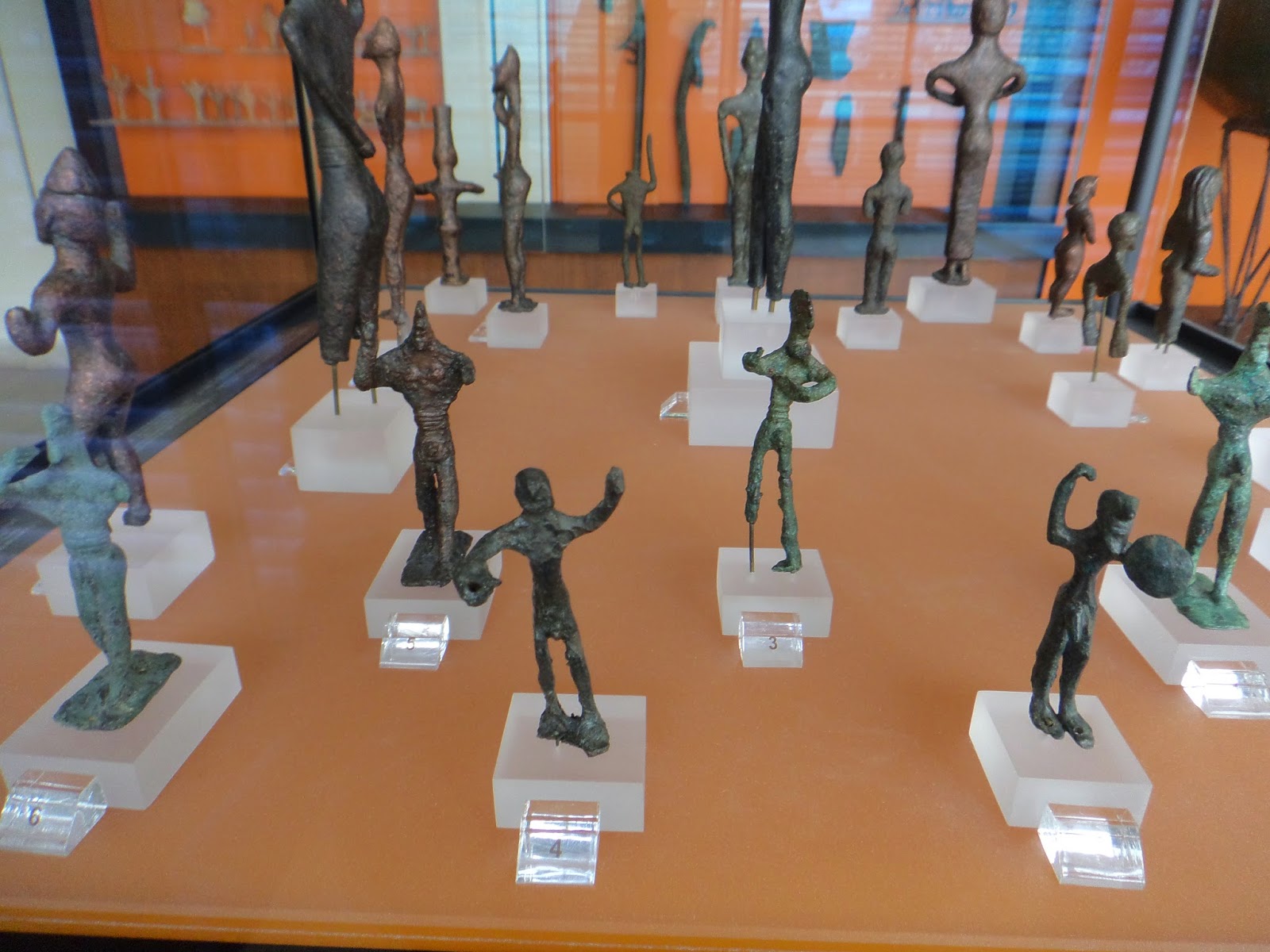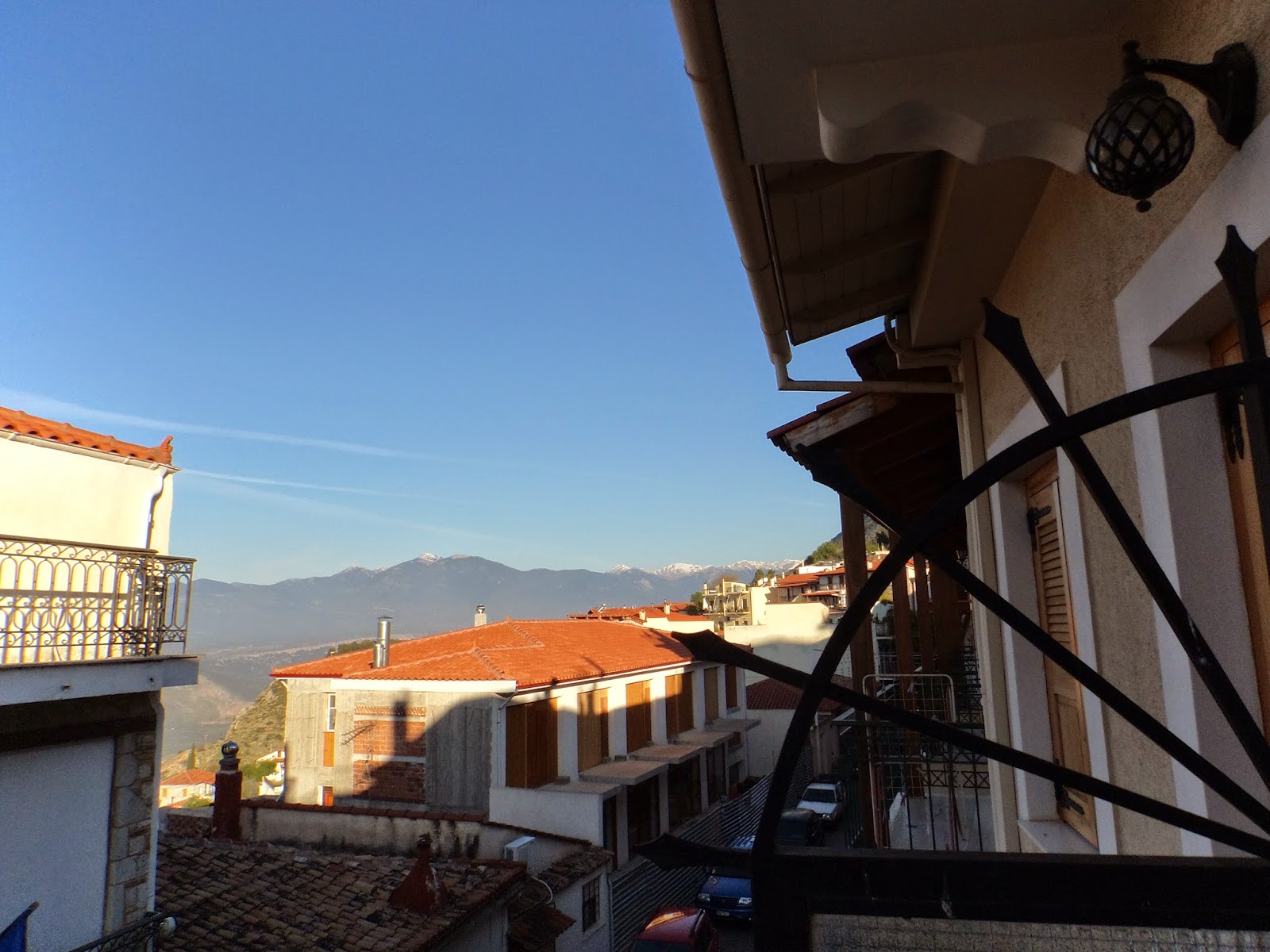Karla had a classics professor at Washington University
in St. Louis (Dr. Susan Rotroff) who does most of her work in the Ancient Agora in Athens. We asked
for a recommendation of archaeological sites to visit in Greece, and besides
the obvious sites in Athens, she suggested Delphi and Mycenae as her favorite archaeological
sites throughout Greece. As I mentioned before, we spent three months in Greece
without a car. We decided to rent a car from the Athens airport for a three day
trip to Delphi and Mycenae (and ended up taking a side trip to the town of
Napflio). It was nice for me to rent a
car and have the freedom to take a drive. I appreciated getting to see the
countryside and exploring a bit more of Greece.
The traffic was heavy around Athens, but I found the drivers to mostly
be logical and the driving conditions were not bad compared to other countries
that I have traveled in such as Jordan or the Dominican Republic.
Driving through the countryside, we observed many small
solar panel installations. I was
surprised to see these disbursed across the landscape as they were not near any
particular use of the energy. I wonder if these solar panel sites are set up
similar to disbursed agriculture where the land owner decided to install solar
panel to produce energy to sell to Athens.
Delphi is a great mountainous site that overlooks an
agricultural valley. You can see all the way down to the Gulf of Corinth in the
Ionian Sea as well. Visiting this site, made me realize how much I appreciate
and miss the mountains.
The Archaeological Site of Delphi is a United Nations
Educational, Scientific, and Cultural Organization (UNESCO) site that was
listed on the World Heritage registry in 1987. The description of the site states
that this is a PanHellenic sanctuary with international fame.
Its remnants represent some of the foremost
events of art and architecture. The sanctuary, which combines in a unique
manner the natural and historical environment, is related to numerous, key
events of Greek history that have an impact on the progress of civilization. Quoted
from the UNESCO plaque at the site.
This site has been used since the Mycenaean period starting
around 1600 BC. The frequency of artifacts increased in the 8th
century BC showing an increase in activity on this site and it was considered
the navel of Gaia.
 The Theater at Delphi is an ancient structure whose first
form is not known and thought to have been made of wooden seats. The first stone built theater at this site
was constructed in the 4th century BC which could seat 5,000 people.
It went through many periods of abandonment and rebuilding. The Romans restored
the theater in 160 BC and the modern theater was restored using stones from
Mount Parnassus. On May 1927, this theater was used during the Delphic Festival
for a performance of an ancient Greek tragedy.
This was the first time in Modern Greek history that a theater was
reused.
The Theater at Delphi is an ancient structure whose first
form is not known and thought to have been made of wooden seats. The first stone built theater at this site
was constructed in the 4th century BC which could seat 5,000 people.
It went through many periods of abandonment and rebuilding. The Romans restored
the theater in 160 BC and the modern theater was restored using stones from
Mount Parnassus. On May 1927, this theater was used during the Delphic Festival
for a performance of an ancient Greek tragedy.
This was the first time in Modern Greek history that a theater was
reused.
The Temple of Apollo was the site where the Oracle of Delphi
once stayed. One hypothesis is that ethylene gas was emitted at a vent in this location
which caused the oracle to have violent trances.
The Treasury of Athens was a built to hold the offerings to
Apollo in recognition of the advice given by the oracle for the Battle of Marathon
in 490 BC.
The Temple of Athena is located downhill (and below the
modern road) from the main set of structures associated with Delphi.
I found it interesting that they had plumbed major water
sprinklers around the site which I assume was for fire protection in this Mediterranean
climate.
In AD 1893 the French Archaeological School located and conducted
the first modern excavations of the archaeological site of Delphi. In the Middle Ages the town of Kastri was
built on the archaeological site. After excavation on the site started, the
town was relocated to the west.
The Delphi Archaeological Museum is a great modern museum
that was remodeled in AD 1999. It houses the Sphinx of the Naxians which used
to stand below the Apollo Temple Terrace and was discovered in AD 1861 and
dates to about 570 BC – 560 BC.
We stayed at the Pithos Rooms (which was highly ranked on
Trip Adviser) in the city of Delphi. The hosts were extremely friendly and
helpful.
We could see snow-capped mountains from our third floor
balcony. This area is known for its winter sports as well as its archaeological
site.
We got a recommendation for a local playground from the
owners of the Pithos Rooms that was a short walk outside of town away from the archaeological
site. On our walk we found an open field with bee boxes which was nice to see.

 The Delphi Archaeological Site was one of the most amazing
archeological sites that I have been to and a large part of that was its great
natural setting on the mountain slope overlooking the agricultural valley with
distant views to the Gulf of Corinth and the surrounding snow-covered
mountains. The depth of history that has occurred at this site also leaves one
in awe.
The Delphi Archaeological Site was one of the most amazing
archeological sites that I have been to and a large part of that was its great
natural setting on the mountain slope overlooking the agricultural valley with
distant views to the Gulf of Corinth and the surrounding snow-covered
mountains. The depth of history that has occurred at this site also leaves one
in awe. 


















All you must know about ancient Greece! So many activities to do with nice sightseeing! just be careful, you need someone to guide you, i went with my gf last year with this https://daytrip4u.com/tour/jeeping-caves-mtparnassos-from-delphi/90884 and it wasan unforgettable experience
ReplyDelete